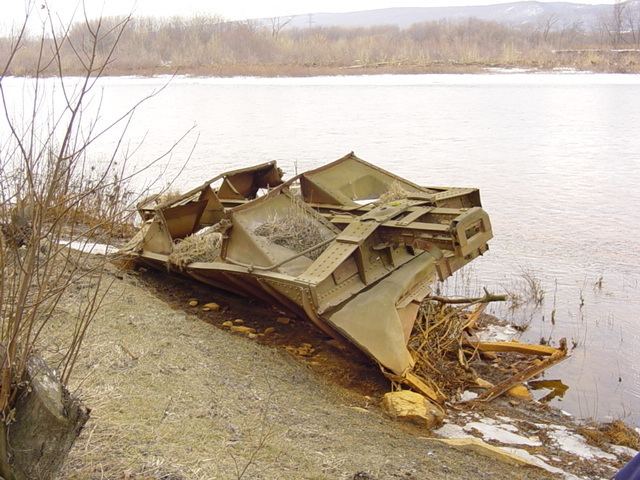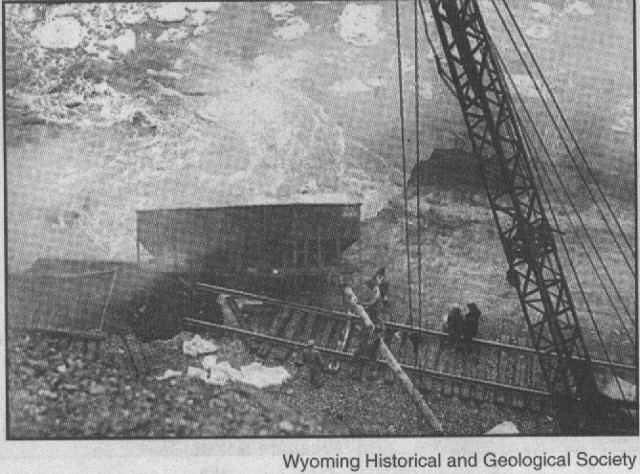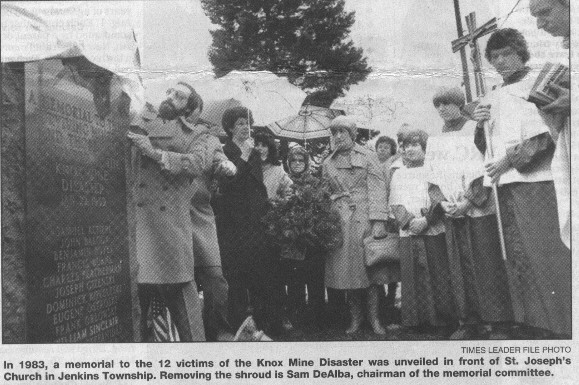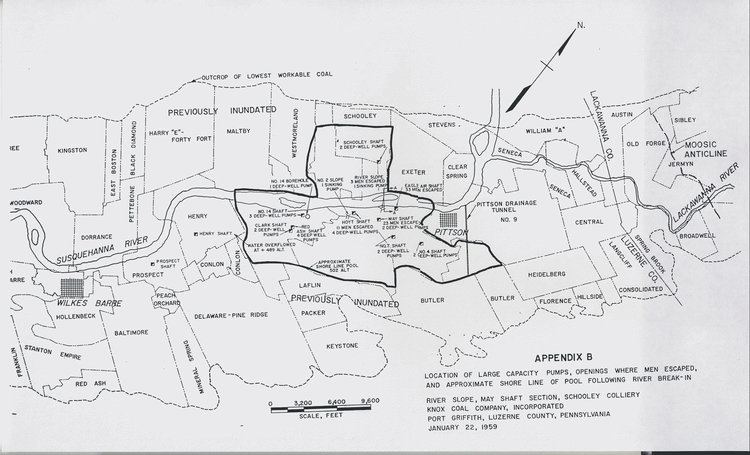Date 22 January 1959 | ||
 | ||
Similar Twin Shaft disaster, Sago Mine disaster, Upper Big Branch Mine disa, Darr Mine disaster, Monongah mining disaster | ||
Knox mine disaster location and footage
The Knox Mine disaster was a mining accident on January 22, 1959, that is widely credited with single-handedly killing the mining industry in the Northern Anthracite Region of Pennsylvania. The Susquehanna River broke through into the many interconnected mine galleries in the Wyoming Valley between west/right-bank town of Exeter, Pennsylvania and Port Griffith, a left/east bank town in Jenkins Township, Pennsylvania, near Pittston. Mitigation efforts created several new islands between the two towns and altered the western-side flow of the Susquehanna around these.
Contents

The River Slope Mine, an anthracite coal mine owned by the Knox Coal Company, flooded when coal company management had the miners dig illegally out under the Susquehanna River. Tunneling sharply upwards toward river bed without having drilled boreholes to gauge the rock thickness overhead, the miners came to a section with a thickness of about 6 feet (1.8 m) -- 35 feet (10.6 m) was considered the minimum for safety. The insufficient "roof" cover caused the waters of the river to break into the mine.
It took three days to plug the hole in the riverbed, which was done by dumping large railroad cars, smaller mine cars, culm, and other debris into the whirlpool formed by the water draining into the mine.

Twelve mineworkers died; 69 others escaped. Amadeo Pancotti was awarded the Carnegie Medal for climbing 50 feet up the abandoned Eagle Air Shaft and alerting rescuers which lead to the safe recovery of 33 men including Pancotti himself. The bodies of the 12 who died were never recovered, despite efforts to pump the water out of the mine. The victims were Samuel Altieri, John Baloga, Benjamin Boyar, Francis Burns, Charles Featherman, Joseph Gizenski, Dominic Kaveliski, Frank Orlowski, Eugene Ostrowski, William Sinclair, Daniel Stefanides, and Herman Zelonis.

The Knox catastrophe was less deadly than the Twin Shaft Disaster in Pittston in 1896, which claimed 58 lives.

Eventually, an estimated 10 billion US gallons (38,000,000 m³) of water filled the mines. Ten people were indicted in the disaster's aftermath, including the mine superintendent, Robert Dougherty; owner Louis Fabrizio; secret owner August J. Lippi, who was also the president of District 1 of the United Mine Workers; and three union officials. Six served jail time.
January 22, 2009, marked the 50th anniversary of the Knox Mine Disaster, with an annual memorial mass at St. John the Evangelist Catholic Church in Pittston, Pennsylvania, and a ceremony held at the former St. Joseph's Catholic Church in Port Griffith, which is the site of a commemorative monument and a State Historic Marker erected in 1999 by the Pennsylvania Historical and Museum Commission. The church was closed in May 2008 owing to a consolidation of area parishes and put up for sale in July 2008. The property was purchased on January 15, 2009, exactly one week prior to the 50th anniversary, by Susan Baloga and John Baloga, the grandson of John Baloga, one of the 12 miners who perished in the tragic event. The property is now the site of Baloga Funeral Home Inc.. The 50th anniversary also included a special program at the Anthracite Heritage Museum in Scranton, which organized an annual program on the disaster in January.
